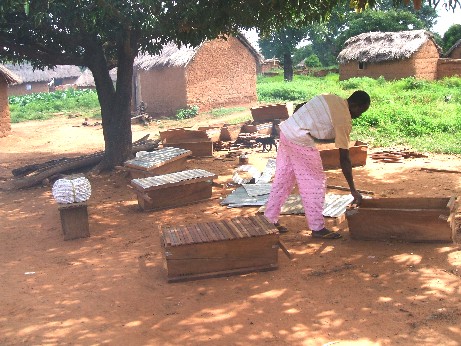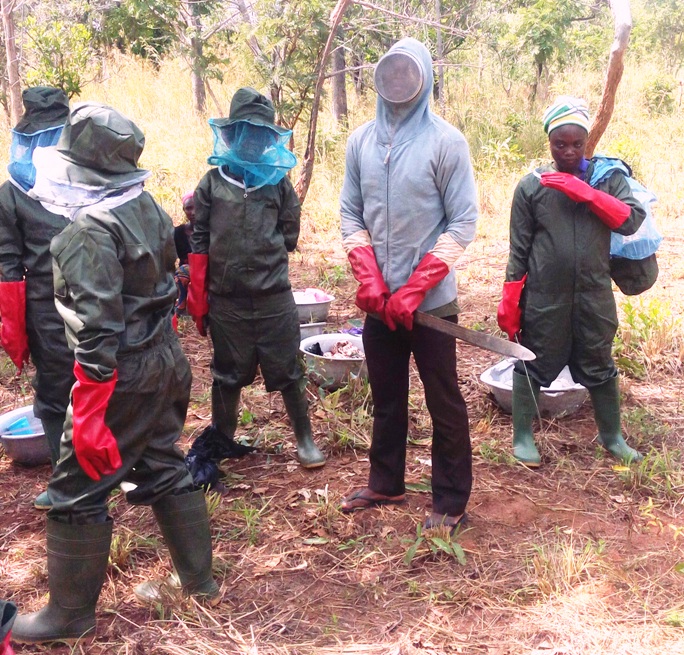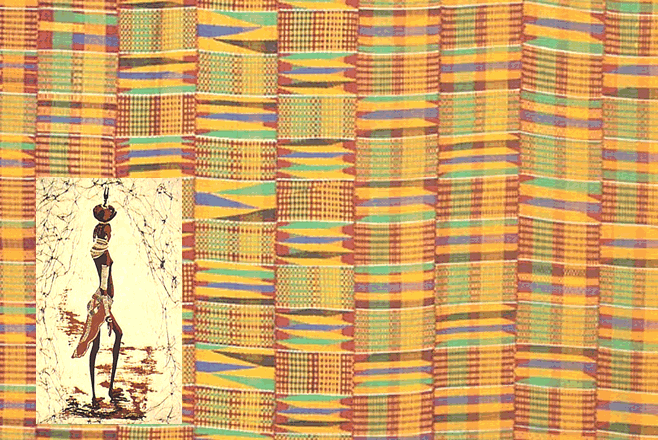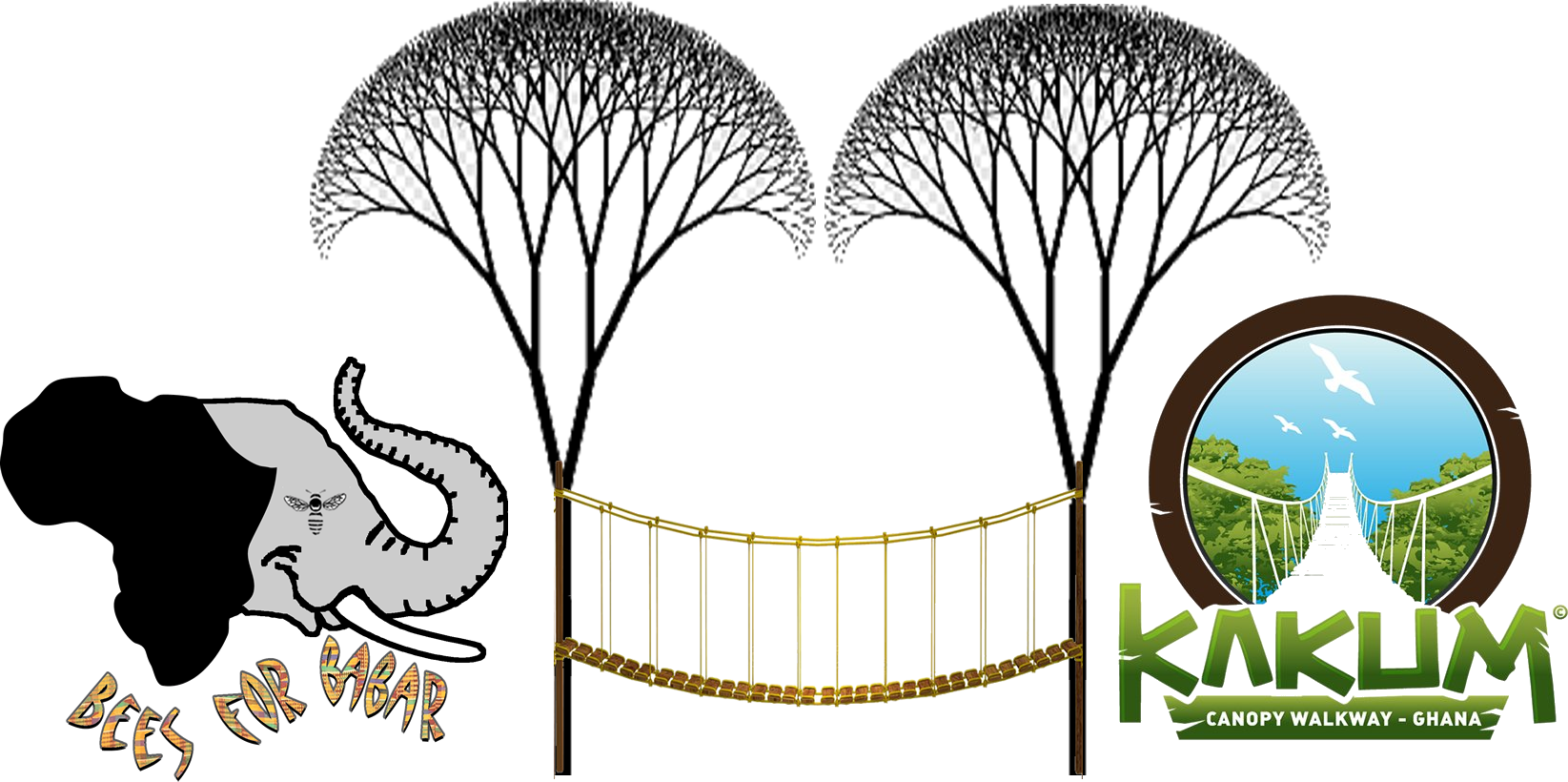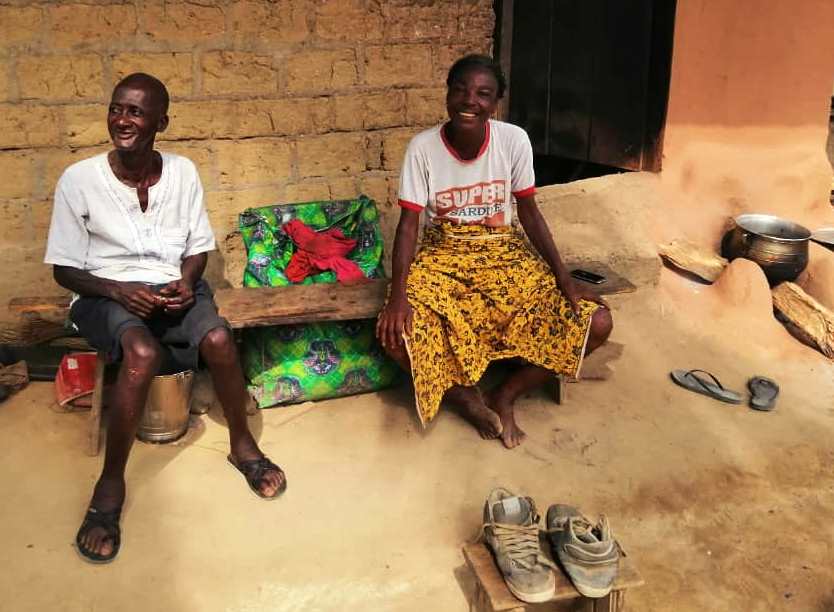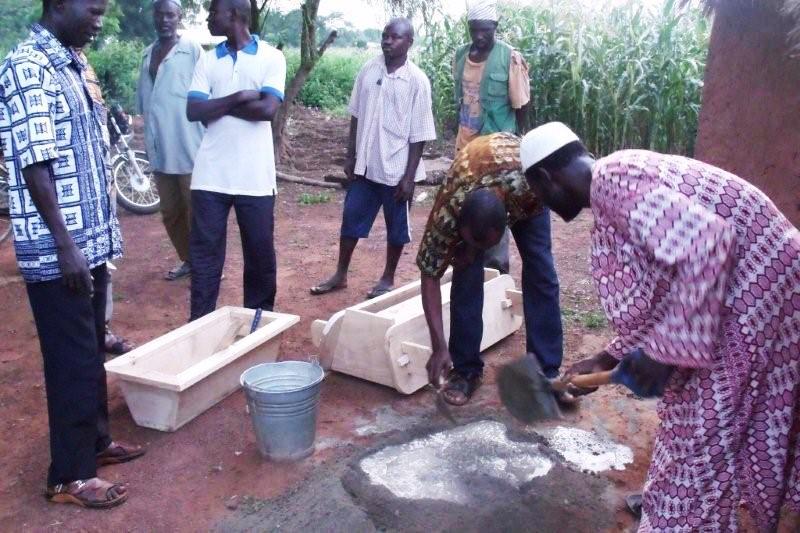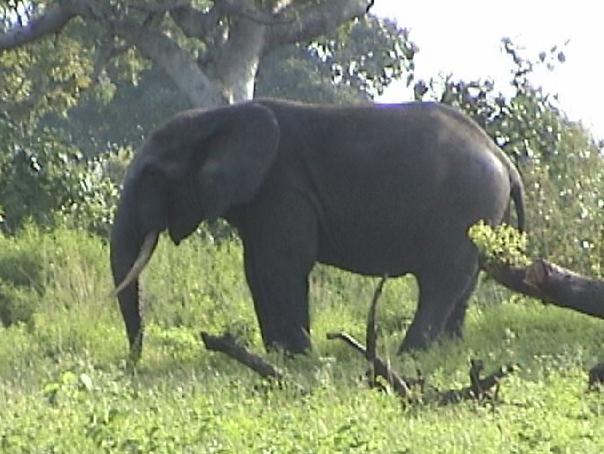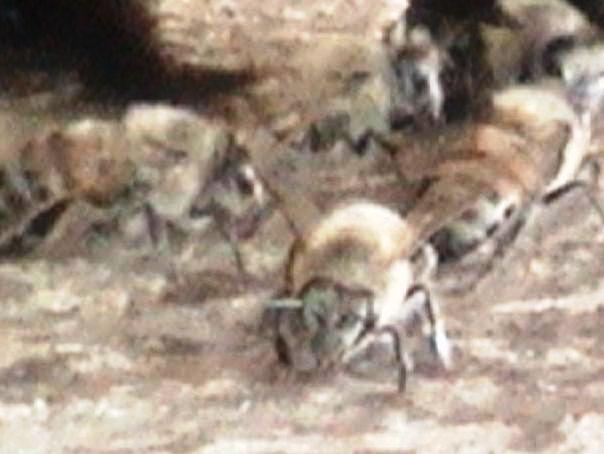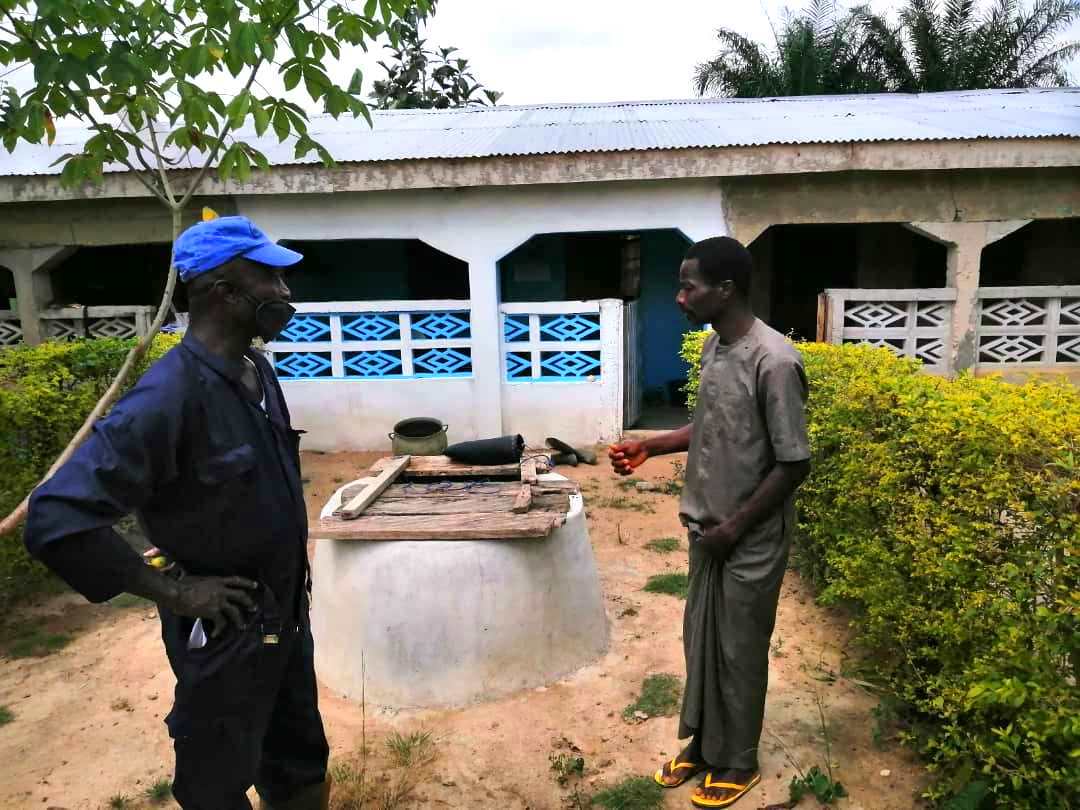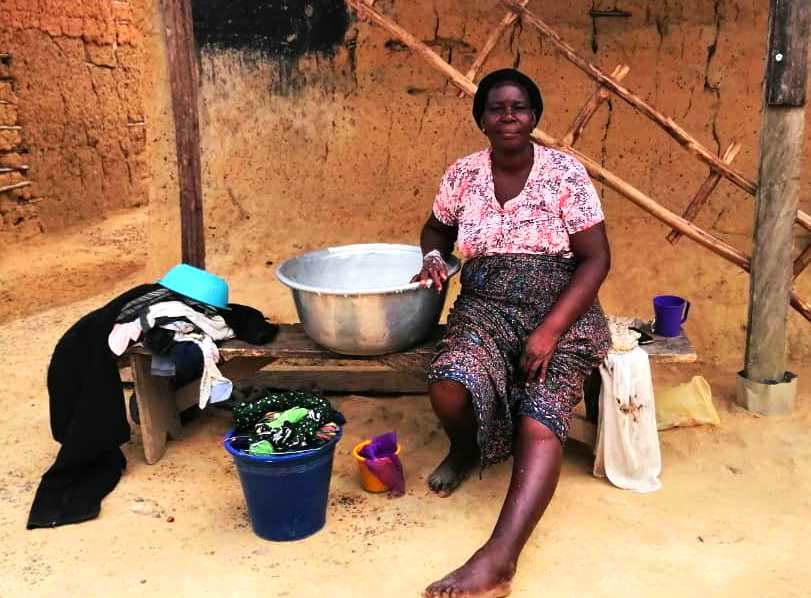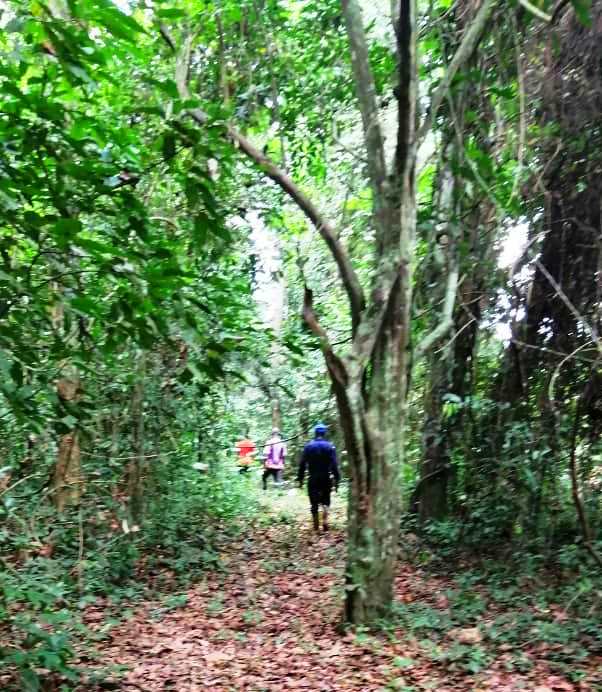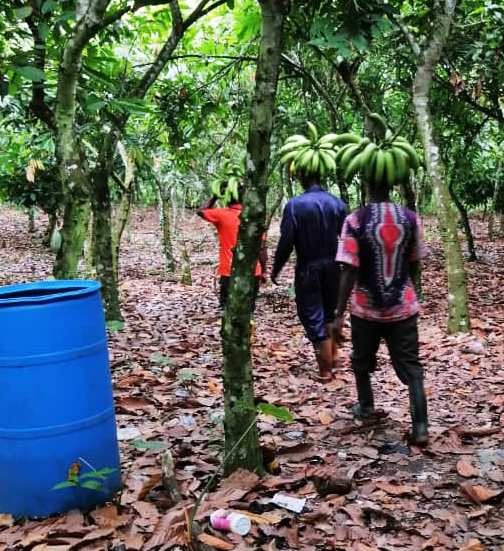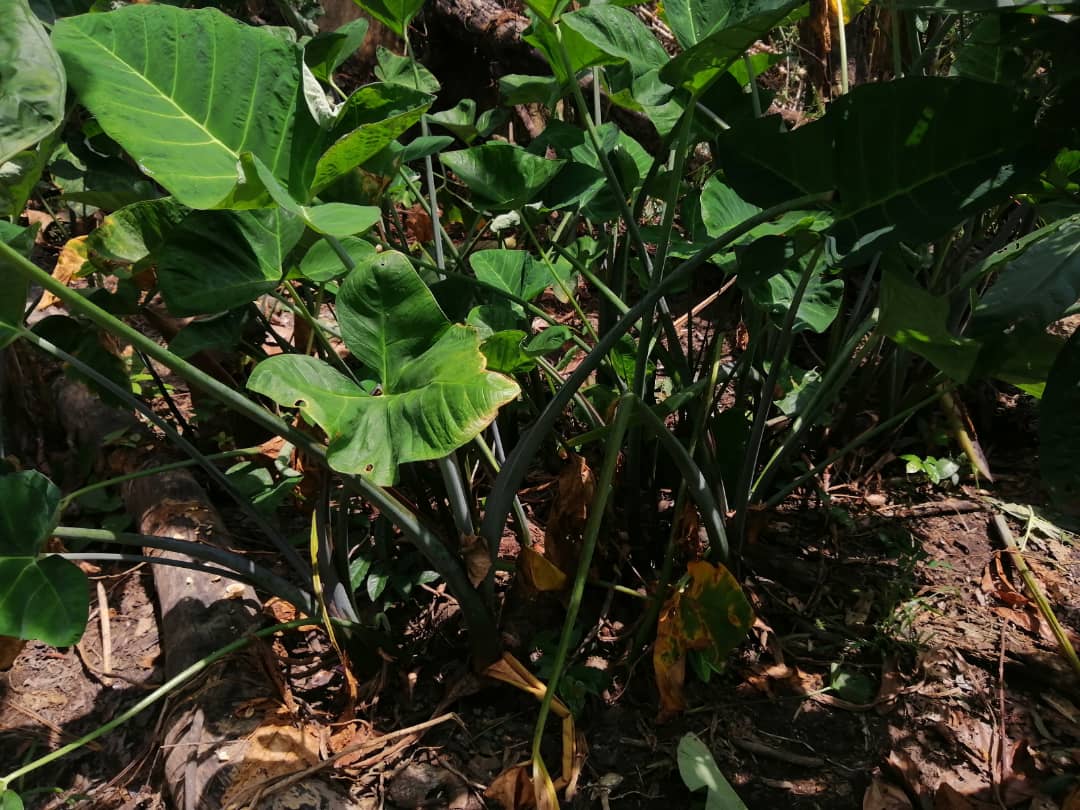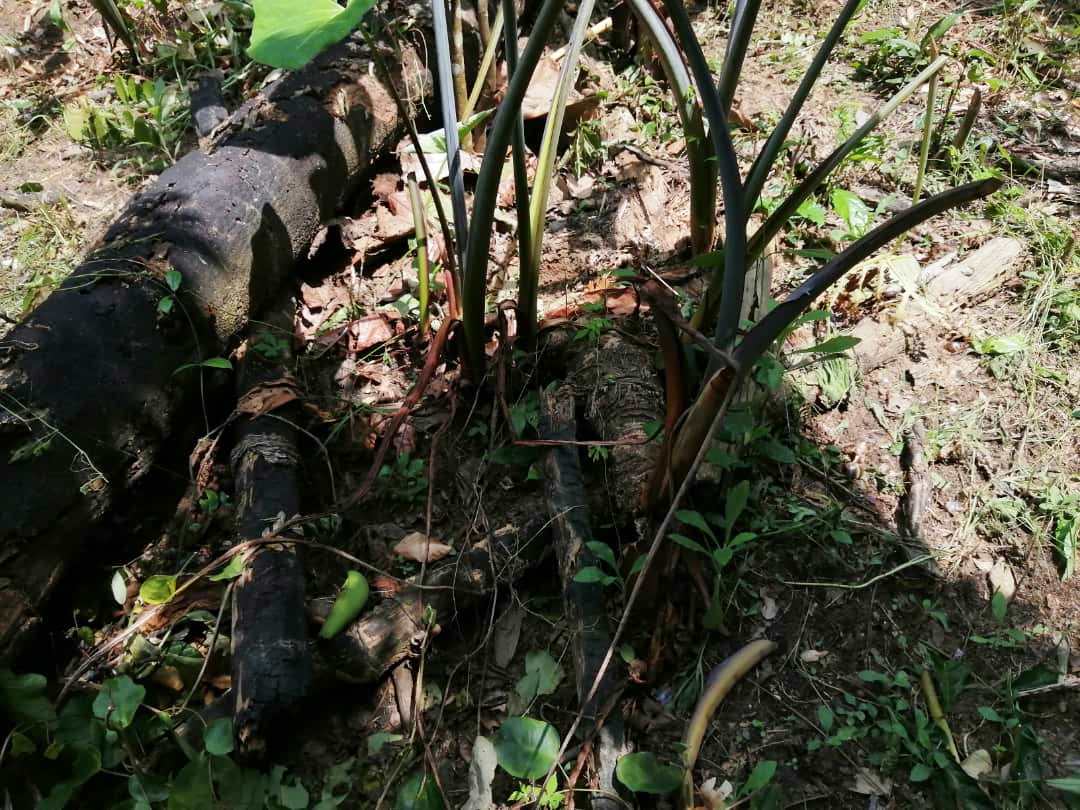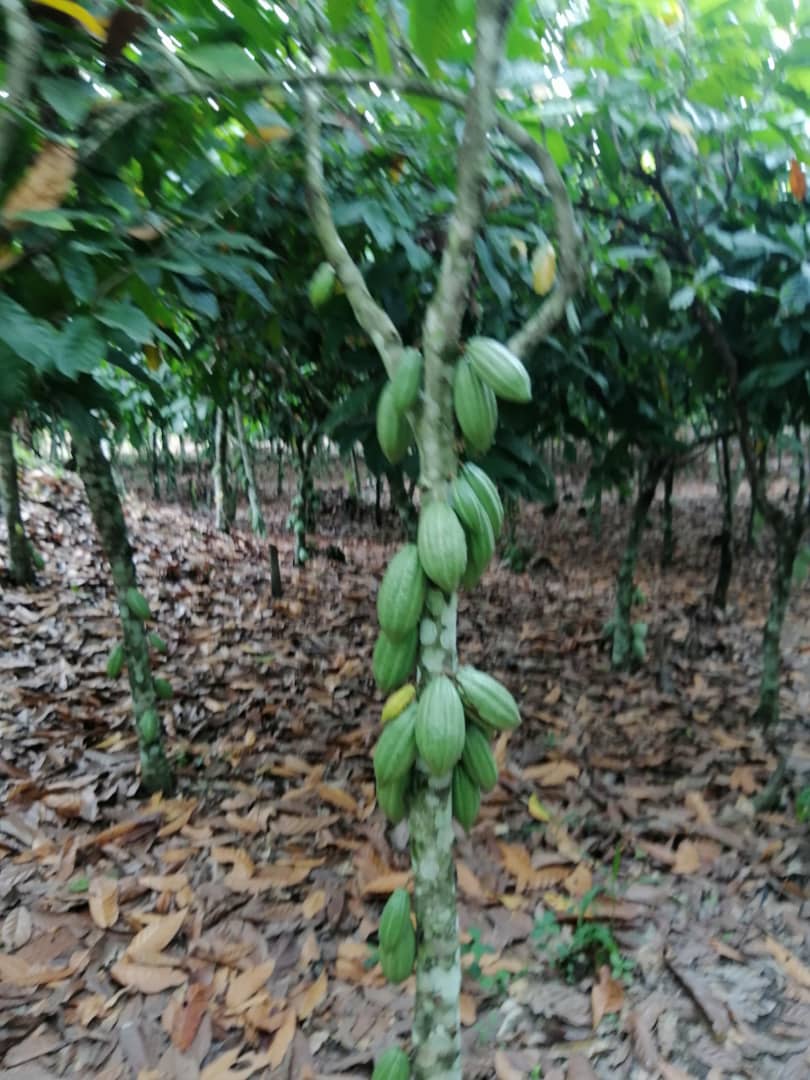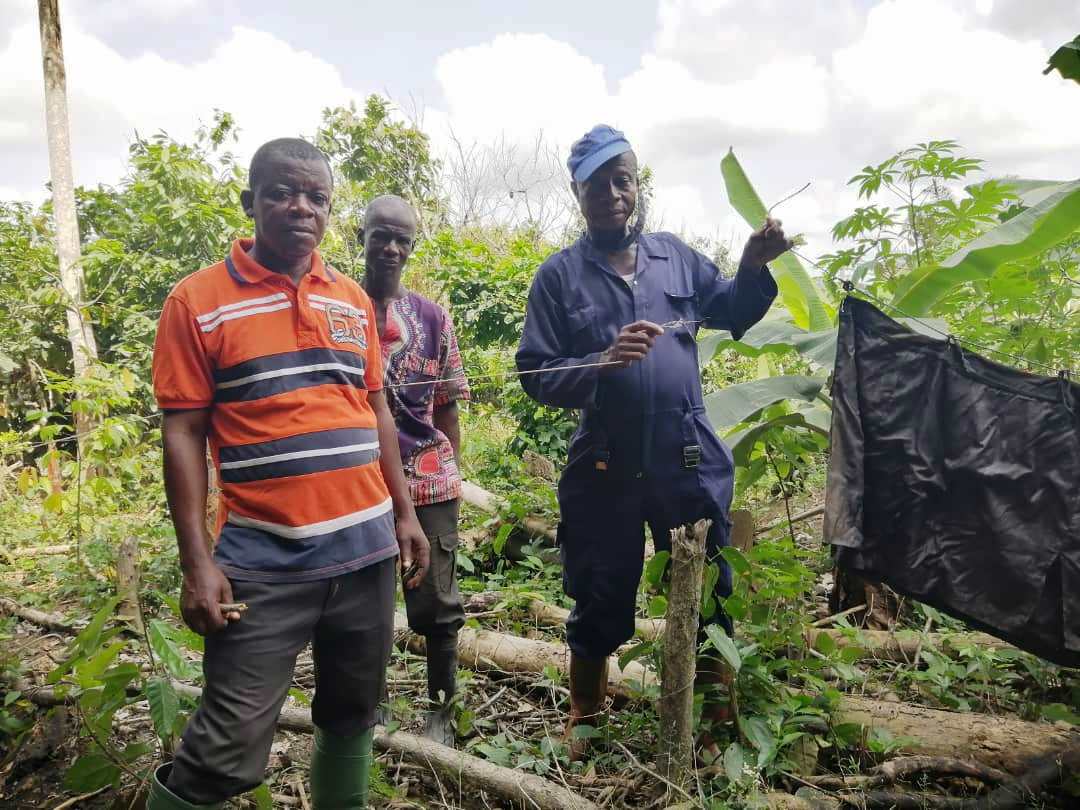• |
donation options | |
• |
bees for babar index | |
• |
guiding principles | |
• |
photos and background | |
• |
publications and resources | |
• |
videos | |
 |
||
Bees for Babar (BfB) beneficiaries include local people...
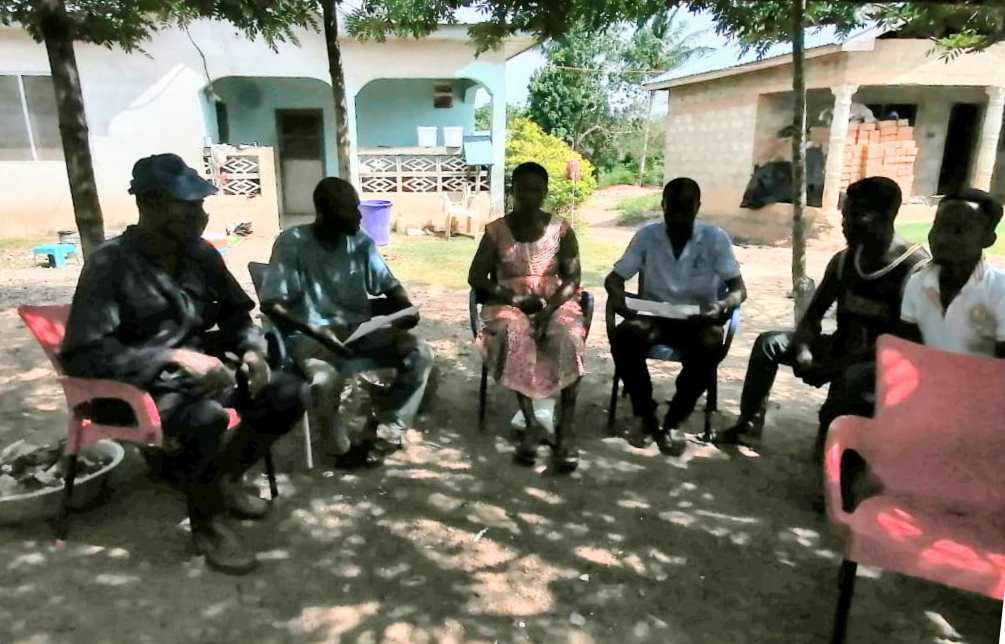
Hereditary chiefs are linked to members of their communities, such as Aboweseso (above), through deep and extensive family ties. Such chiefs assist, with local councils, in making decisions on land management issues including those related to agriculture. (Note the cassava tubers in the bowl at left being processed for gari.)
Click on text or images below to jump to corresponding page:
People of Kakum area... |
|||
|
Kakum Park Guides such as Emmanuel Peasah
|
||
|
|
||
Women spend many hours per day in food preparation such as, shown here the rinsing of ground cassava to make a staple, gari, which is used, much like rice balls or fufu, as the carbohydrate base on which savoury soups or stews are served. (To complement this gari photo see a Ghanain recipe for gari foto at bottom.) |
|
||
|
|
||
|
Like everywhere else, rural Ghanaians enjoy sunning themselves outside their houses to converse with passersby. Note the large cooking pot at right that would be used for cooking over an open fire. |
||
|
|
||
|
Small family farmlands are usually at some distance from centralized community dwelling complexes-- where they are not always under the vigilance of growers-- and thus are more easily targetted by snack-seeking elephants. |
||
|
|
||
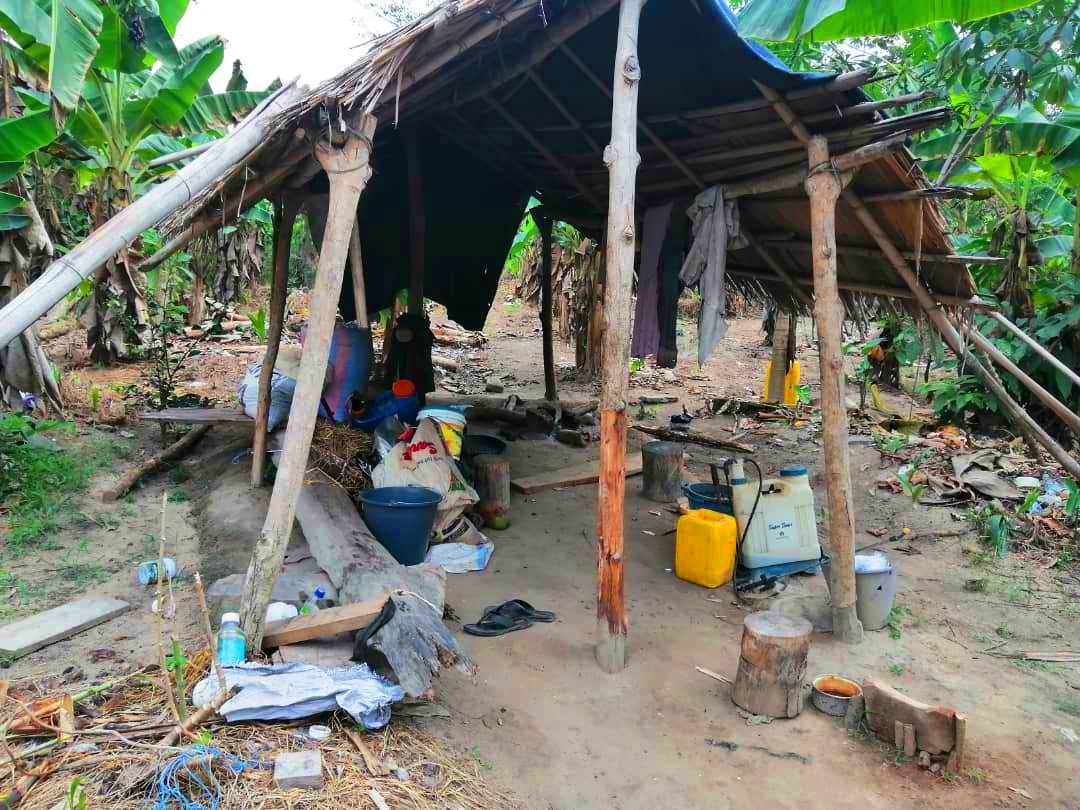 |
Since farmed areas usually lie at some distance from dwellings rustic shelters are often constructed near croplands to store farming equipment or to escape the elements or rest.
|
||
Bananas are a familiar food favourite around the world. Less familiar, in North America, at least, is the cooking banana or plantain which, when green, like those shown at right, is sliced and fried for making tasty chips or pounded and boiled in some types of fufu (a starchy, doughy staple common across Africa). Unfortuneately, these crops are also favourites of elephants and this plantain plantation was targetted by elephants the previous year. (Carrying heavy loads, balanced on the head as shown, is a skill that most rural Ghanains learn as children and utilize throughout their lives.) |
|
||
|
|
||
|
Cocoyam, or taro root, is another starchy tuber, like cassava and yam, that is a staple of Ghanaian cuisine. |
||
|
|
||
These cocoyams were damaged, like nearby plantins, by elephants in the previous year.
|
|
||
|
|
||
Cacao trees are the source of cocoa beans, from which chocolate is derived. The beans are inside the pods-- which are unusual, amongst seed-bearing fruits, in growing from the trunk of the tree, rather than from branches. Cocoa is the major cash crop in the area so when the ripe pods are damaged by raiding elephants, who prize the sweet pulp surrounding the beans, this can represent a major financial loss to the grower. |
|
||
|
|
||
|
|
||
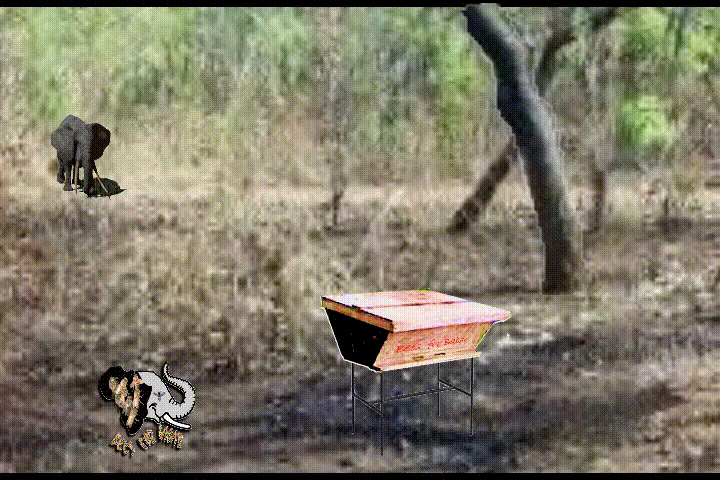 |
|||
Erecting beehive fences on cocoa farms’ boundaries with the protected park can contribute to protecting crops from incursions by elephants tempted out of the park by the succulent plants. |
|||
Thanks to Ellis Noble of Ellis Noble Coffee Processing Enterprise for his valuable assistance in conducting preliminary inquiries and ground-truthing related to the BfB Kakum expansion-- , and for the above photos! |
|||
Ghanaian food is becoming a bit of a social media sensation recently. Here's an easy recipe for a quick meal or side dish (this is the Ghanaian university students equivalent to ramen noodes ;-): GARI FOTO (side dish or light entree)
|
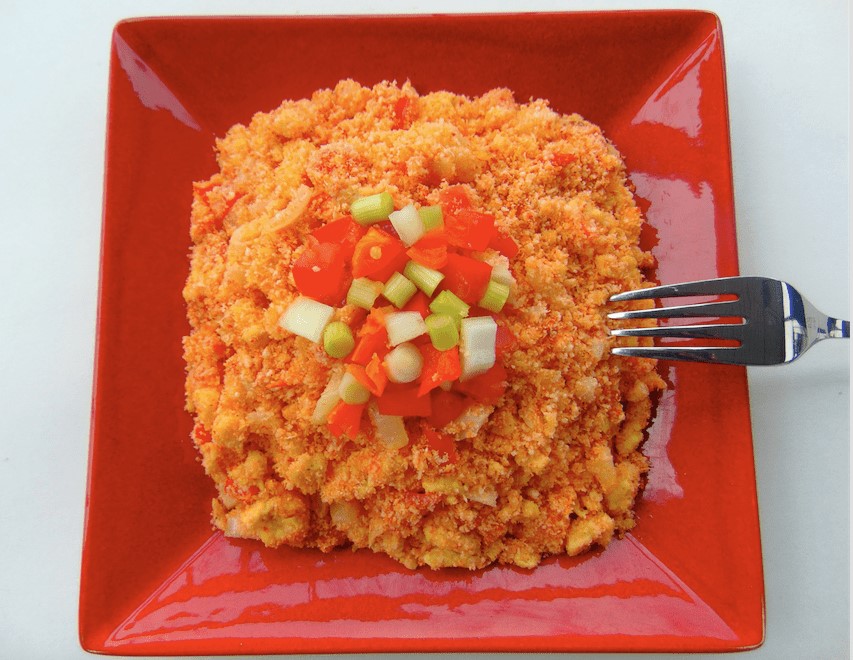 |
||
Gari is coarse-grained roasted, grated, fermented cassava flour used as a staple food in a way similar to rice. Cook the onion and tomatoes in oil in a non-stick saucepan, stirring until pulpy. Add carrots and fry for a few minutes. Stir in the mushrooms, green peppers, stock and hot pepper. Cover and simmer for 10 minutes. Mix the gari into the sauce in handfuls, stirring constantly until all the liquid is absorbed. Serve hot with a vegetable or fish stew. |
|||

